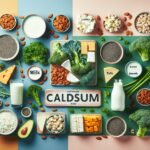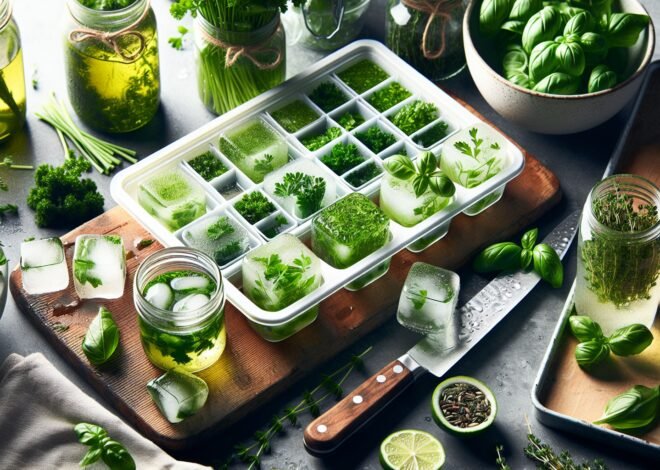
The Role of Water Temperature in Dough Making
Water temperature in dough making plays a crucial role in achieving the perfect consistency and texture. Did you know that even a slight variation can significantly impact yeast activity and gluten development? This post will delve into how different water temperatures affect dough elasticity, fermentation speed, and flavor profile. Understanding the science behind these temperature variations can transform your baking results, giving you consistently high-quality dough. Continue reading to discover tips and techniques for leveraging water temperature to improve your bread-baking skills.
“`html
Understanding the Importance of Water Temperature in Dough Making
Water temperature plays a critical role in dough making. It influences yeast activity, dough consistency, and overall texture. Each type of dough requires specific water temperatures to achieve the desired results. By understanding these factors, bakers can fine-tune their recipes for perfection every time.
How Water Temperature Affects Yeast Activity
Yeast is a living organism, and its activity is highly sensitive to temperature. Water that’s too cold can slow down yeast activation, resulting in sluggish fermentation. Conversely, water that’s too hot can kill the yeast, halting fermentation altogether. The ideal temperature range for yeast is typically between 95°F and 115°F. This range ensures optimal yeast activity, promoting a steady rise in the dough.
When yeast is active, it produces carbon dioxide, which helps the dough rise. This gas expansion creates the light, airy texture that is characteristic of many baked goods. Proper water temperature ensures that yeast can perform efficiently, making it a cornerstone of successful baking.
The Impact on Dough Consistency and Texture
Water temperature affects more than just yeast. It has a direct impact on the dough’s consistency and texture. Cold water can make dough stiff and difficult to knead, while warm water makes it more pliable. The right balance is essential for achieving the desired dough characteristics.
For example, a softer dough is typically preferred for bread, allowing for a more even and open crumb structure. In contrast, pizza dough may benefit from a firmer texture that results from using slightly cooler water. Understanding these nuances can help bakers achieve the perfect texture for their specific baking needs.
Different Water Temperatures for Various Types of Dough
Different types of dough require varying water temperatures to achieve optimal results. For instance, traditional bread dough benefits from water around 110°F, while pastry dough often requires cooler water to maintain flakiness.
Each dough type has unique characteristics that are influenced by water temperature. By adjusting water temperature according to the dough type, bakers can ensure consistent and high-quality results every time. Knowing these target temperatures is a simple yet effective way to enhance baking outcomes.
Optimal Water Temperature for Different Dough Recipes
Each dough recipe has its own ideal water temperature. This ensures desired textures and flavors. Understanding the nuances of different recipes helps bakers create exceptional baked goods consistently.
Best Practices for Bread Dough Water Temperature
Bread dough is a staple for many, requiring a specific water temperature to rise and develop properly. The typical range for bread dough water is between 105°F and 110°F. This temperature range ensures that the yeast is activated without the risk of killing it.
Consistent water temperature helps achieve the perfect crumb and crust. For artisanal breads, this attention to detail can elevate rustic, chewy loaves. Bakers often experiment within this range to find the sweet spot for their particular recipe.
Ideal Water Temperature for Pizza Dough Recipes
Pizza dough is known for its unique texture and flavor. The optimal water temperature for pizza dough is slightly lower, around 95°F to 100°F. This temperature allows the dough to develop slowly, enhancing its flavor and texture.
Using the right water temperature helps achieve the perfect balance of chewy and crispy in the final pizza crust. Bakers who aim for authentic pizza textures focus on maintaining this specific water temperature to replicate traditional Italian-style pizzas.
Adjusting Water Temperature for Pastry Dough
Pastry dough requires a delicate touch, and water temperature is a crucial factor. Cooler water, typically around 60°F to 65°F, is ideal for pastry dough. This prevents the butter from melting too soon, maintaining the dough’s flakiness.
When butter stays solid within the dough, it creates layers as the dough bakes. These layers contribute to a light, flaky texture. Precise water temperature control is essential for perfect pastry dough, ensuring that texture and taste are consistently ideal.
Troubleshooting Common Dough Issues Related to Water Temperature
Dough making can sometimes present challenges due to incorrect water temperatures. Recognizing these issues early makes it easier to adjust and improve results. Learning how to troubleshoot can help bakers salvage their recipes and maintain quality.
Identifying Signs of Incorrect Water Temperature
Signs of incorrect water temperature in dough making include sluggish rising, dense texture, and poor flavor. If the dough feels too sticky or stiff, it may indicate improper water temperature.
Yeast that fails to activate due to cold water can result in under-risen dough. Conversely, overactive yeast from hot water may cause the dough to rise too quickly and collapse. Understanding these signs helps bakers troubleshoot and correct their approach.
Tips for Correcting Dough Problems in Baking
Correcting dough issues often involves adjusting the water temperature. If the dough is too stiff, try using warmer water. If it is too sticky, use cooler water to improve texture.
In some cases, adjusting the environment, like proofing in a warmer area, can also help. Experimenting with small changes in water temperature can lead to significant improvements in dough quality. Flexibility and responsiveness are key to mastering dough challenges.
Advanced Techniques for Precise Water Temperature Control in Dough Making
For bakers seeking precision, advanced techniques such as using a digital thermometer can ensure accurate water temperature. Temperature control devices, like sous vide, can maintain steady temperatures, enhancing dough consistency.
Incorporating temperature control into the baking process can lead to consistently high-quality results. By honing these skills, bakers can achieve the perfect dough every time, elevating the quality of their baked goods.
“`
Conclusion
Water temperature is crucial in dough making as it affects yeast activity and dough consistency. Warmer water accelerates yeast fermentation, ideal for fast baking processes. Cooler water slows down fermentation, allowing for better flavor development in artisan breads. The optimal temperature range for water in dough making is around 80-90°F (27-32°C). Consistent temperature helps achieve desired dough texture and rise.
“`html
FAQ
What is the ideal water temperature for making dough?
The ideal water temperature for making dough ranges between 105°F to 110°F. This ensures yeast activates properly, leading to optimal dough rising.
How does water temperature affect yeast activation in dough?
Water temperature directly impacts yeast activation. Warm water speeds up the process, while water that’s too cold or too hot can hinder yeast performance, affecting dough rise.
Can cold water be used in dough preparation for better texture?
Using cold water in dough preparation can lead to a firmer texture. It slows fermentation, allowing flavors to develop over time, which can enhance the overall dough texture.
Why is warm water recommended for bread dough processing?
Warm water is recommended because it activates yeast efficiently. This helps in achieving the desired dough rise and texture needed for quality bread.
What are the consequences of using hot water in dough making?
Using hot water can kill yeast, resulting in dough that fails to rise. It’s crucial to maintain the right temperature to preserve yeast activity and dough efficacy.
How does room temperature water influence dough fermentation speed?
Room temperature water slows down fermentation, extending the rising time. While slower, it can produce a more flavorful dough due to extended fermentation.
“`











